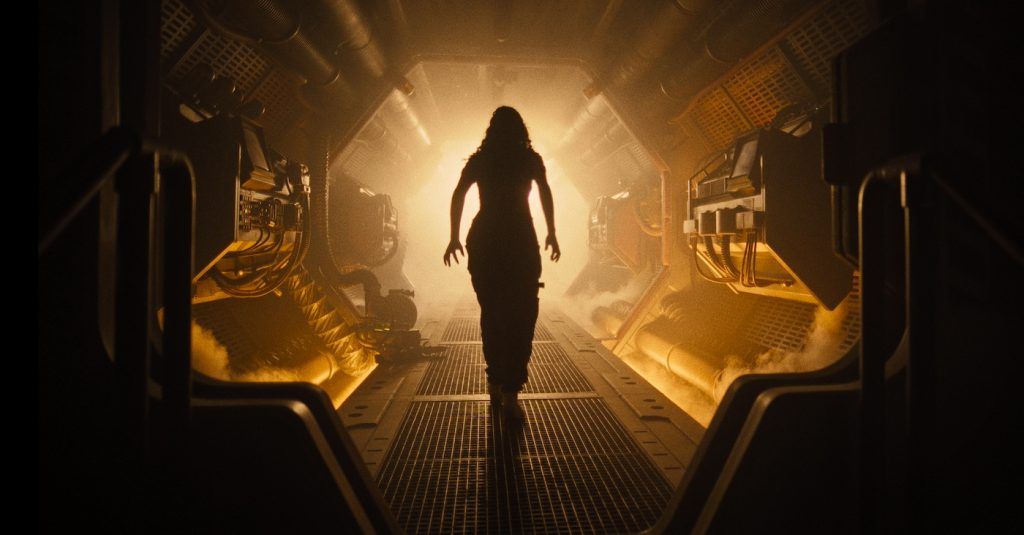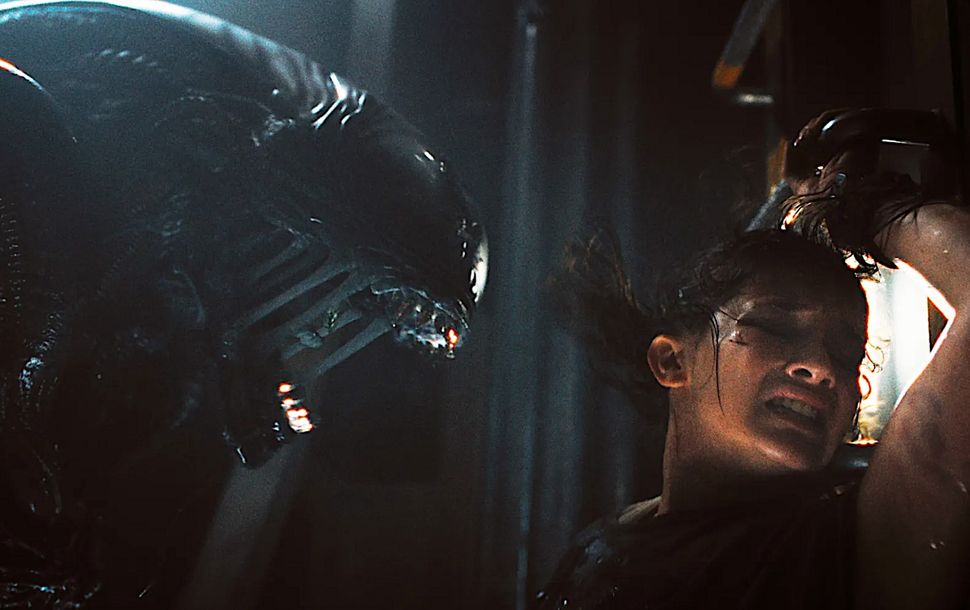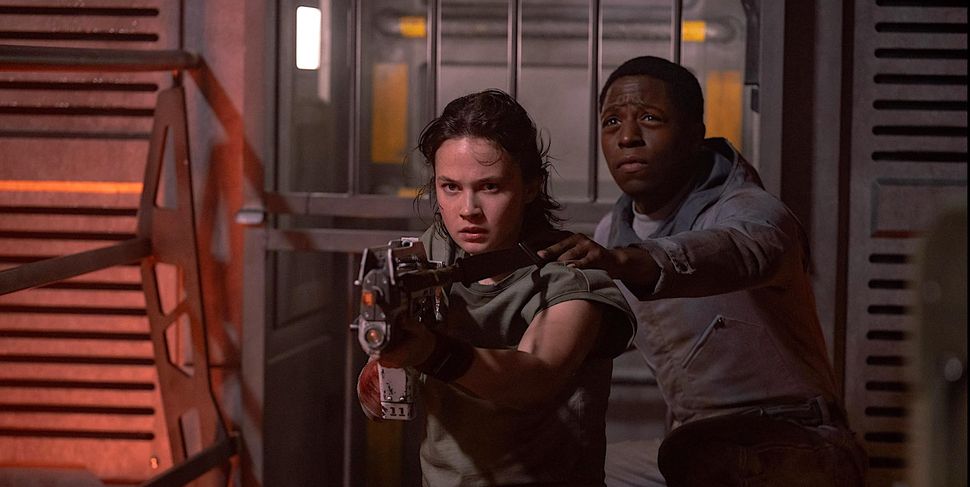
‘Alien: Romulus’ is a visceral return to form for a venerable sci-fi franchise (review) (Image Credit: Space.com)
Heading into the early evening IMAX screening of 20th Century Studios’ “Alien: Romulus” to experience what director Fede Álvarez had up his sleeve for this seventh film in the main Alien franchise, I was filled with trepidation and palpable anxiety.
After all, it had been seven years since Sir Ridley Scott’s “Alien: Covenant” stunk up theaters with its sick slaughterfest and his involvement in this project’s direction just didn’t have the clout it might have carried decades ago regardless of his stellar Hollywood career. Would this be more aimless mythology dissection or something fresh and inventive? Drop the house lights and let’s crack open the egg!
When the final credits rolled 118 minutes later after a supremely satisfying date with the xenomorphs and their innocent prey aboard a spooky Weyland-Yutani research station, I felt like the talented filmmakers and invested actors involved truly got this property back in its cinematic space lane. It’s a fantastic soft reboot that doesn’t stray too far off its corporate leash, and is more akin to what director J.J. Abrams’ “The Force Awakens” accomplished for the aging “Star Wars” empire. (If you need a refresher on the “Alien” franchise, check out our guide on how to stream the Alien movies, our picks for the Alien movies ranked worst to best and a guide on how to watch the Alien movies in order.)
Taking place some two decades after the tragic events of “Alien” and before “Aliens”‘ “tough hombres” in the Colonial Marines headed back to LV-426 for an epic bug hunt, “Romulus” feels like a close cousin to both movies, operating in that comfortable sweet spot between the stylish elegance of Ridley Scott’s vision and the gung-ho machismo of James Cameron’s sensational sequel.
“Romulus” pays due respect to those iconic films with intelligent fan service callbacks of memorable lines and scenarios, but it also carves out its own identity with polished modernity.
Related: The spaceships of the Alien movies
It all begins at the gritty Weyland-Yutani colony of Jackson’s Star Mining Co. where a group of young workers fed up with the inhuman corporate environment gather their courage and lift off in a borrowed spaceship to scavenge for fuel and supplies from what they believe is an abandoned or decommissioned spaceship orbiting above. Their intended destination is a terraformed world called Yvaga III where the renegade clan will hopefully see the sun rise.
It turns out that Renaissance, the derelict installation, is of course owned by Weyland-Yutani and it once operated as a research and development base for more meddling with xenomorph DNA to advance human evolution (and create more resilient workers!). Their source material is explained in a clever plot device lifted straight from the finale of “Alien.” Some fans might roll their eyes at this obvious callback but it’s not milked for its nostalgic value and serves the overall story well.
Before long it’s a facehugger stampede inside the two creaking, groaning station modules named Romulus and Remus after the famous Roman myth. Then the inevitable secretions, perspirations, penetrations, and abrupt bodily eruptions we’ve witnessed as “Alien” fans for decades arrive as seething adult xenomorphs run amok hunting for juicy incubation prey. Survival quickly becomes reality in this dank Hell.
Related: Alien: The Xenomorph life cycle explained

“Romulus” is populated by an extremely small cast of six yet this impressive ensemble of actors is to be praised for their sincere, authentic performances. It stars Cailee Spaeny (Rain), David Jonsson (Andy), Archie Renaux (Tyler), Isabela Merced (Kay), Spike Fearn (Bjorn), and Aileen Wu (Navarro). Jonsson’s fine works here as the synthetic human Andy is worth the price of admission alone, and his sympathetic portrayal of a conflicted android adds an immeasurable level of humanity.
Visually, “Romulus” is a stupendous and sumptuous feast, composed of breathtaking images of outer space. Standout sequences include a doomed space station skimming along the jagged icy rings of a nearby planet and a perilous gauntlet of floating gobs of acidic xenomorph blood. Mexican cinematographer Galo Olivares (“Gretel & Hansel”) has emulated the lighting design and color palette of “Alien’s” director of photography Derek Vanlint while also delivering a foreboding feel of an old-fashioned haunted hive in space and its exhilarating throwback atmospherics.
Related: ‘Alien’ heard us all scream 45 years ago. What it was like on opening day
Composer Benjamin Wallfisch’s inventive score is another of the absolute highlights of “Alien: Romulus,” operating within and dancing around thematic cues found in Jerry Goldsmith’s symphonic masterpiece in “Alien” and James Horner’s thunderous military tracks from “Aliens.” But where his genius really excels is in the injection of industrial-edged synthesizer music paired to many of the hardcore action set pieces that fondly reminds us of ’90s techno tunes and vintage Nine Inch Nails.
Legacy Effects’ creature design using a combination of puppets, audio-animatronic and suit actors is outstanding and recalls actor Bolaji Badejo’s eerie performance in the first “Alien.” After all the, even though we’re 100 years into the future cast out in the far reaches of outer space, this is at its core a monster movie and the film is steeped in a menagerie of all the various alien lifeform stages you can stomach.

Several early online impressions of “Alien: Romulus” prior to the review embargo being lifted on Wednesday mentioned director Fede Álvarez (“Evil Dead,” “Don’t Breathe”) taking a “major swing” at the film’s climactic moments, but don’t let that distract you going into your screening as that’s a gross exaggeration. And everywhere, around any corner, down any corridor, marked on every machine, the ever-present spectre of Weyland-Yutani and its insidious grip on the galaxy looms.
Effective and efficient in its execution, “Alien: Romulus” operates with a video game-like, theme park-attraction precision punctuated by drooling, toothy extraterrestrials and a solid storyline, characters to root for, engaging music and a solid return to “Alien’s” roots. As big-budget, mass marketed Hollywood entertainment presented for a historic franchise in the middle of summer, what more could you ask for?
Álvarez has conceived a worthy addition to the “Alien” canon by respecting the past yet staring towards the future. “Romulus” confidently believes in itself and delivers on nearly every promise as a terrific sequel tribute. Its reach never quite exceeds its grasp, and as the fairy tale heroine Goldilocks once declared, “it feels just right.”






